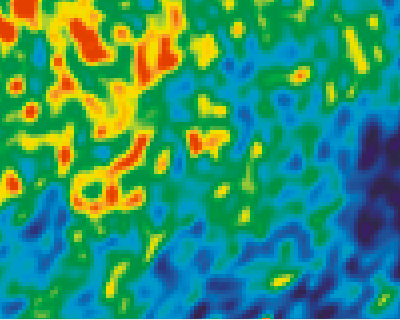
|
|

|
|

|
|
All the images are from the same area in the sky. The enlargement is 400 %
Picture 1 and Picture 2 are the raw pictures. The colour schemes of both pictures is different and are explained below.
Picture 3 and Picture 4 are the modified pictures. The colour scheme of both pictures is the same.
0,0 ---------- 1024,0 860,240 -------- 960,240
| | | |
| | | |
| | | |
512,0 ---------- 1024,512 860,320-------- 960,320
Source Picture 400 % enlargement
Figure 1
|
Figure 1 shows the position of the pictures. The top left corners has the coordinates 860,240. The bottom right corner has the coordinates 960,320.
The highest value of the Planck Picture 2 (and Picture 4) is at coordinate 879,247. This point has a temperature of 517 micro Kelvin. This is the brown point near the top left corner
For a copy of the WMAP 2009 source file go to: Ilc_9yr_moll4096.png
For a copy of the Planck source file go to: 735683main_pia16873-full_full.jpg
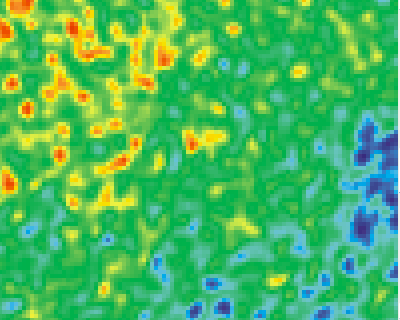
|
|
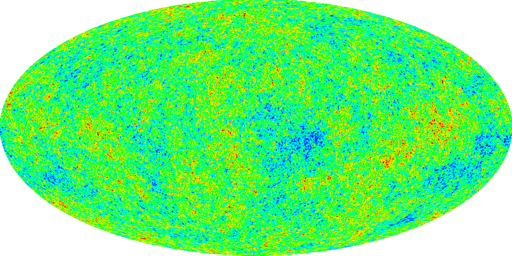
|
|
|
|
|
Red 0 0 255 255 255 103
Green 9 221 237 180 75 0
Blue 255 255 217 0 0 0
colour blue white red brown
temperature -500 -177 -6 161 329 500
region 1 2 3 4 5
Planck Source Colour Scheme
Figure 2
|
The destination colours of the Planck pictures follow a lineair scheme.
Red 0 128 255 255 255 128
Green 0 128 255 255 255 255 255 128 0 0
Blue 128 255 255 255 128 0 0
colour blue cyan green yellow red
temperature -500 -400 -300 -200 -100 0 100 200 300 400 500
region 1 2 3 4
Planck/WMAP Destination Colour Scheme
Figure 3
|
In order to calculate the temperature of the planck 2013 data you have to visit: http://arxiv.org/abs/1212.5225 the top of page 89 ( 9 Year WMAP Observations: Final Maps and Results )
The temperature range goes from -200 to 200. There are 9 regions
Red 33 20 2 8 30 32 3 142 236 226 182
Green 14 63 130 150 162 161 145 185 221 142 26
Blue 96 132 196 203 183 168 72 12 5 33 26
colour blue
temperature -200 -115 -35 -18 9 18 61 114 143 178 200
region 1 2 3 4 5 6 7 8 9
WMAP 2009 Source Colour Scheme
Figure 4
|
(Html) (PRE) WMAP database 45.htm 0 198,039215686275 1039 73,8546457699606 (/PRE) (/HTML) |
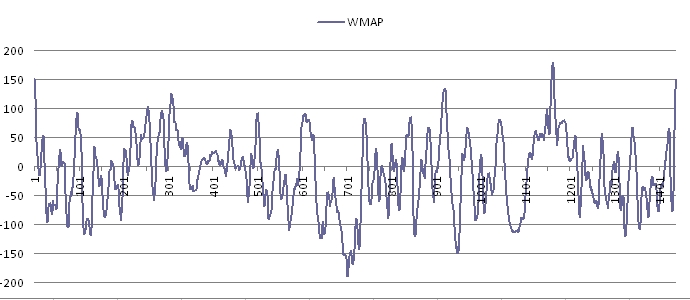
|
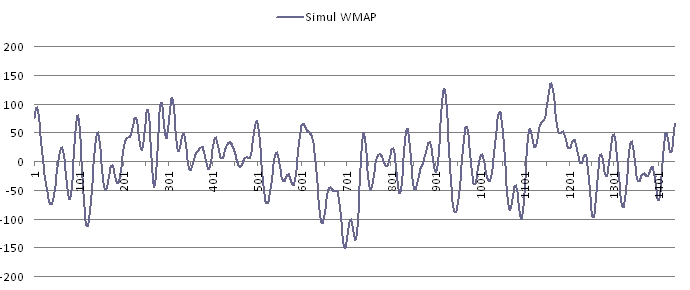
|
The same for the WMAP and Planck results for Hour = 45. But when you compare the results for Hour = 10 and Hour = 45 than they are different. This is more or less as expected because the WMAP and Planck results are generally speaking identical, but if you compare the results for different meridians than they are different. |
|
|
The Planck 45* value is lower than the Planck 45 value because much more sinus functions are included (500 compared to 60) |
When you study the results the question arises: What is the physical interpretation of each of these sinus functions.
IMO none. They have no physical meaning. They are not real. They do not describe a physical effect. It is only pure mathematics.
To claim that the sinus functions are Baryonic Acoustic Oscillations is not obvious.
The only exception is when you modify the function slightly and R(0) is included.
For the results see: Comparison with R(0)
For the WMAP results there is almost no difference
For the Planck results there is a difference because R(0) is negative. The CMB radiation images are fluctuations around an average temperature of 2.725 Kelvin. A negative value of R(0) means that this average value should be lower.
You could also perform the same exercise around earth as a function of the distance above and below sea level and calculate the same harmonic waves. Also for these harmonic waves there is no physical interpretation.
The colour of each pixel represents the wave length (or frequency) of the (CMB) radiation received. The colour red means: high temperature and high wave length (relative). Blue means low temperature and low wave length
However this raises a problem when you compare WMAP with Planck data.
When you consider the left corner of picture 3 you will see that this is an area with high temperatures.
When you consider the same corner of picture 4 then you will see that this is also an area with high temperatures but the values are much higher.
That means that each pixel receives a range of photons with different wave lengths.The conclusion is that the final colour of each pixel represents an average of the received wave lengths.
The same is true for the low temperatures. For example the bottom right corner of Picture 3 and Picture 4.
The reality is that from each position in the sky we receive CMB radiation within a range of frequencies.
This fact makes the physical interpretation much more difficult. The frequencies outside the average value should also be included and they can be important to calculate the cosmological parameters. In fact they make the calculation more difficult.
This is different when you consider star light. For star light the main parameter is intensity. That means all photons of all frequencies are considered. You can also study the temperature of a star. In that case only a subset of all the frequencies are studied.
For more about the CMB radiation read this: Friedmann's equation - Question 13
Back to my home page Contents of This Document